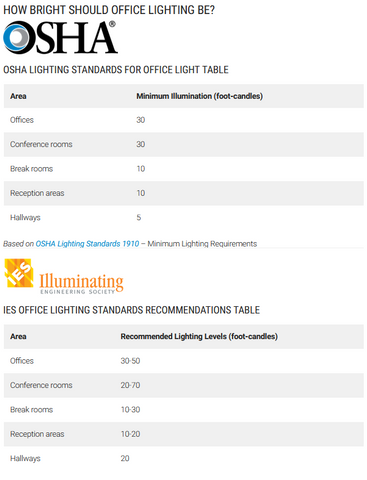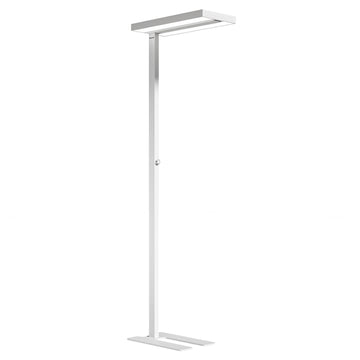Creating a secure, health-conscious, and efficient work atmosphere is crucial for any enterprise. This includes guaranteeing that areas like offices receive adequate lighting. While often overlooked, lighting is a critical aspect of workplace design, governed by both state and federal regulations that outline the proper lighting requirements for office environments.
Understanding Office Lighting Standards
At the national level, the Occupational Safety and Health Administration (OSHA) establishes lighting standards for office spaces, supplemented by state-specific guidelines. These standards typically reference the American National Standards Institute (ANSI) recommendations, notably The American National Standard Practice for Office Lighting, and guidelines from The Illumination Engineering Society of North America (IESNA).
Office lighting standards provide illumination level guidelines, measured in lux, which differ based on the nature of the work and its reliance on computers, among other factors.
The aim of these standards is to foster a work setting that is conducive to employee comfort, enabling them to perform their duties effectively and productively, free from issues like eyestrain.

Outside of the illumination levels, the most relevant of these guidelines focus on ensuring that light sources are well maintained and are positioned in such a way as to minimize issues such as glare and excessive shadows.
Understanding Lighting Metrics
There are several different lighting metrics that can be used to measure the quality and quantity of light, and all of them have their relevance to ensuring an office is lit correctly. The three most relevant are luminous flux, color temperature, and the color rendering index.
Luminous Flux and Lux
Luminous flux measures the visible power of light, essentially being the quantity of illumination it provides. This is typically measured in lumen or lux (lx), with lumen representing the total amount of light given off by a bulb and lux measuring the lumen per square meter. Lux generally has much more relevance when determining standards as it can be used to ensure that a specific area is appropriately illuminated.
The recommended lux for a workspace varies depending on the nature of the work, with tasks that are inherently low contrast or of a very small size requiring higher lighting levels than larger, lower contrast tasks.
The American National Standard Practice for Office Lighting recommends that in offices where work is predominantly computer-based, levels of illumination should not exceed 500 lux in order to avoid excessive screen contrast, which is in line with the Illuminating Engineering Society of North America’s recommendation of 200 to 500 lux for high contrast and large-scale tasks.
If other tasks are also being performed, requiring higher levels of illumination, task lighting should be used to accomplish this.
Color Temperature – More critical than you think

The color of visible light is described by color temperature, using units of kelvins (K). Lower color temperatures indicate warmer colors with a yellow or reddish shade, while higher temperatures suggest cooler lighting with a bluish tint, as seen in the graph above.
Typically we recommend a middle of the line color temperature for offices, between 4000 to 5000 Kelvin. It’s worth noting that the color temperature of light has no correlation to the actual heat generated by the bulb or fixture.
Lighting standards state that the color temperature of lighting is important, and studies have shown it has a substantial impact on alertness and energy levels. It is also important to understand the impact that the color temperature of lighting can have on mood, with warmer quality lighting promoting relaxation while cooler temperatures enhance concentration.
Conference Rooms and Meeting Spaces
Conference rooms and meeting spaces often have less focus on screens than the general office environment, meaning that there usually isn’t a need to keep the illumination level down out of concerns for screen contrast. If those attending are likely to be making notes or reading from handouts, this is a lower contrast activity and as such would warrant higher lux lighting.
There is no hard and fast rule for the color temperature of the lighting in such circumstances, but consideration should be given so that it complements the mood of the meeting. If your conference room is multi-functional, I would suggest getting dimmable fixtures in a neutral color temperature (4000-5000 kelvin).
Color Rendering Index – Why is it important?

Color rendering is the way a source of illumination impacts the perceived color of other objects. The color rendering index (CRI) is a measure of how closely the color rendering provided by a specific light is to natural light.
Generally, lighting should have a minimum CRI of 80 to allow for a reasonable level of comfort, but a higher CRI of at least 90 is recommended if tasks are color-critical.
Click to shop Honeywell lamp now!









